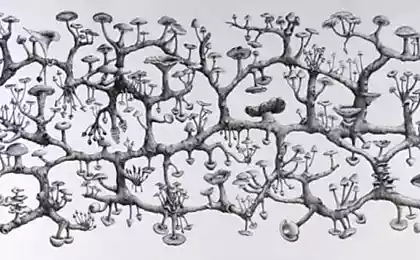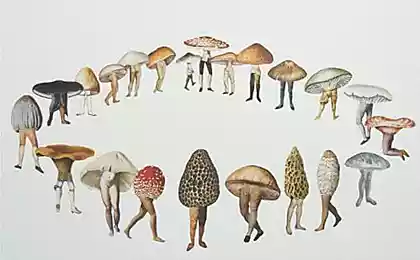882
Secret signals animals - chemical messages

Animals respond to chemical messages exchanged may not even realize
One spring morning of XIX century French scientist named Jean-Henri Fabre sat at home and watched the female pavlinoglazki hatch from cocoons. He placed a mole in a thin cell, to keep track of what happens next. He did not have long to wait: the same evening dozens of males pavlinoglazok flew into his house through an open window. Fabre later wrote that it was "unforgettable».
What could attract these males? Fabre began experimenting. When he put the female moths in a loosely closed space - for example, in a closet or drawer - males found her. But if he put it in a sealed box or glass jar, males flew by.
Fabre quickly ruled out the possibility that the female moths attracted males from afar his appearance or sound. The only thing left is that she did it with the help of smell. If it produced a kind of chemical bait, then what was it?
Then the scientists hypothesized the existence of special substances - sex attractants. Yet it took almost a century to the point where in 1959 a German scientist Adolf Butenandt opened the first such substance. For 20 years Butenandt and his team were looking for flavor, which emits female silkworms to entice males. Extracting chemicals from hundreds of thousands of species of moths, they eventually found the chemical. He was named bombikol.
After opening Butenandt scientists began to find more and more chemicals, which we now call pheromones. These chemicals or mixtures of chemicals are used as a system of messages between individuals. They may cause some individuals of the same species to change the behavior or influence the process of puberty.
"Almost all of the animals you can imagine, using pheromones" - says a zoologist at Oxford University in England, Tristram Wyatt.
Scientists are still studying these chemical messages, including how some species can copy the pheromones in the "treacherous" purposes. For example, some researchers have found plants that mimic insect pheromones to attract the beetles. Not surprisingly, people also learned how to use pheromones to deceive and attract insect pests - sometimes to their certain death.
However, there still remains unknown whether emit pheromones people, and in this case other people respond to these chemical signals are classified.























